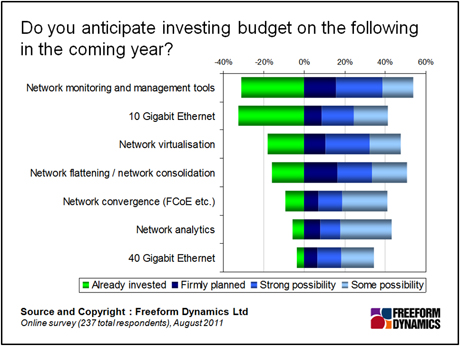What are the drivers of data centre networking investment?
As companies rely ever more on IT for enabling their business operations, networks have become the vital plumbing that enables information, content or data to flow from where it is created or stored to where it is needed. For much of the last decade, networks have been designed to be in place for many years, and once implemented can be challenging and costly to change.
Switches and routers usually spring to mind as the most obvious parts of the network infrastructure, and they usually have long lifetimes, often in the region of seven years or even more. However, one of the biggest and most under-appreciated networking investments is in the physical cabling that links it all together – and this may have a useful lifespan of a decade or more.
This long-term approach to network design and implementation suited the era of physical IT, where workloads ran on dedicated hardware and rarely, if ever, moved around. However, this is changing as rapid developments in higher-level data centre trends impact on the requirements of the network.
Virtualisation has become the accepted way to deploy many applications. For many companies, the initial wave of virtualisation is now essentially complete, and a move to storage virtualisation is now underway. Although there is still some activity planned around static server virtualisation, attention is now shifting towards investing in private cloud based on dynamic infrastructure (Figure 1).

The other major area where investment is firmly planned is reducing data centre sprawl through consolidation. Sometimes this will result in a many smaller data centres being consolidated into one or a few bigger data centres. Most of the time, however, the strategy will be to shut down some of the data centres and transfer the workloads into existing facilities that need to be refurbished to handle the load.
These higher-level data centre trends are dictating where the investment priorities are when it comes to networking. The move towards private cloud is dependent on a virtualised environment with an integrated and automated management stack with a focus on service assurance. This is translating to a strong intention by many to continue investing in network monitoring and management – as well as taking a more analytical approach to understanding the network. It’s also apparent that many companies are now starting to take virtualisation of the infrastructure to the next level by virtualising the network in addition to servers and storage (Figure 2).

With consolidation comes a greater demand on the network. This has already seen a marked shift to 10Gb Ethernet that will continue for the near future. Recently though, this has also kick-started interest in 40Gb kit to cope with the growing levels of data being carried. For many, this is now starting to include bandwidth heavy services such as IP telephony and video services, as well as growing interest in ‘Big Data’.
One of the biggest areas of investment is geared around simplifying the architecture of the network to support the move to private cloud, which is fundamentally based on dynamic infrastructure. This is leading to a change in network traffic patterns. There is a shift away from ‘North-South’ flows, where traffic would travel between a client and a server across access, aggregation and core network tiers, to one where traffic is more ‘East-West’, where the traffic is more and more between servers in different segments in the data centre.
Having multiple tiers adds complexity, uncertainty and cost to the network, and results in physical constraints to the network. This may limit the flexibility of moving virtual workloads around the network. As private cloud becomes more established, there are initiatives to simplify this three-tier approach with a flattened network. This involves removing one or more network tiers to vastly simplify the traffic flows in the data centre, making virtual workload redeployments, and general operations management, much simpler.
Whether you’re after incremental improvements or looking to re-invent your network with a clean sheet approach, the key trends to be looking out for are flatter, faster and more manageable networks.
CLICK HERE TO VIEW ORIGINAL PUBLISHED ON

Content Contributors: Andrew Buss